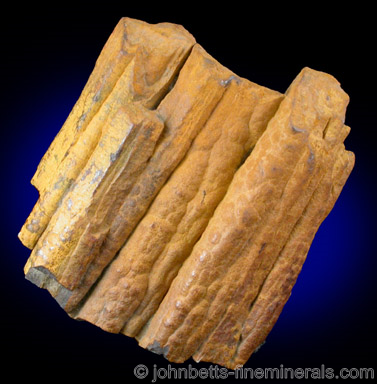Limonite

Limonite is scientifically not considered a true mineral as it lacks a definitive chemical formula and crystal structure. However, all mineral reference guides list it together with other minerals. Limonite is a matrix base of many other minerals, and the term gossan is used as a reference to Limonite when it is used as a a matrix for another mineral or has formed an undesirable staining on top of it.
Limonite is extremely common and forms the coloring matter in many soils. It is also responsible for the coloring on the weathered surfaces of rocks. Much Limonite, especially the fibrous type, is either Goethite or altered Goethite that absorbed water in its chemical structure.
Limonite commonly forms as a pseudomorph over other minerals, especially Pyrite, Marcasite and Siderite. These pseudomorphs are very identifiable by their partial rusting look and yellow staining.
Chemical Formula
FeO(OH) · nH2O
Color
Yellow, brown, reddish-brown. Occasionally iridescent in a play of colors.
Additional Information
Composition
Hydrous basic iron oxide, with an indefinite composition
|
In Group
Oxides; Hydroxides |
Striking Features
Color, streak, and formations |
Environment
As a secondary mineral formed from the alteration of iron minerals.
|
Uses
Limonite in a ore of iron and is used as a pigment in the manufacture of paints. Besides for a few aesthetic lustrous botryoidal forms of Limonite,
as well as the interesting pseudomorphs, Limonite is not of much
interest to collectors.
Noteworthy Localities
Limonite is extremely common and found worldwide. Excellent iridescent botryoidal masses have recently been found in China at Nandan, Guangxi Province, and at Qinglong, Guizhou Province. Excellent Limonite pseudomorphs after Pyrite come from Rio Marina, Elba Island, Italy; and Arenalejos, Carratraca, Spain.
In the U.S., pseduomorphed Pyrite comes from Fruitville, Lancaster Co., Pennsylvania; Aquadale and Porter, Stanly Co., North Carolina; Pelican Point, Utah Co., Utah; and the Elizabeth R. Mine, Pala, San Diego Co., California.
Distingushing Similar Minerals
Wad - Darker in color, does not become magnetic upon heating.